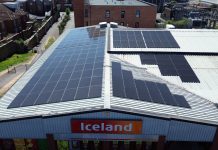Since Energy Procurement reported on levelised costs in 2011, understanding the cost of power generation has become no less complex or controversial. However it remains an essential tool for energy market analysis and business planning nonetheless. Georgina Bisby reports.
A ‘levelised cost’, or the Levelised Cost of Elelectricty (LCOE) as defined by the Department of Energy and Climate Change (DECC), is the average cost over the lifetime of a particular plant type per MWh of electricity generated. This figure reflects the cost of building, operating and decommissioning a generic plant for each technology but does not take into consideration potential revenue streams.
Whether it’s for traditional fossil fuels, renewables or nuclear, estimating a plant type’s LCOE helps to interpret the overall competitiveness of differing generating technologies.
Factors that affect this figure are numerous and variable. They can include capital costs, fuel costs, fixed and variable operations and maintenance costs, financing costs, and the plant type’s utilisation rate. Market conditions also play a part as does the maturity of the technology – taken into account by the allocation of either a ‘FOAK’ (first-of-a-kind) price or ‘NOAK’ (nth-of-a-kind) price.
Given the volume of variables, LCOE estimations are understandably extremely uncertain. As much as any LCOE estimates try to capture these uncertainties it is accepted that they won’t do so completely and the figures must therefore be viewed in this context.
When Energy Procurement looked at LCOE in 2011 the latest figures came from the ‘UK Electricity Generation Costs update,’ a Mott MacDonald report, which was commissioned by the Committee on Climate Change for its Renewable Energy Review and published in June 2010.
Broadly summarising, the report’s key findings were that excluding carbon costs coal-fired power stations offered the least expensive technology for generating electricity in the near and medium-term. Including carbon costs, gas-fired power stations were the cheapest option for near- term projects while nuclear power was the least expensive in the medium-term followed by on-shore wind which offered the least expensive renewables option.
Since then, in 2013, The World Energy Council (WEC) and Bloomberg New Energy Finance (BNEF) published The Cost of Energy Technologies, a comparative study of the costs of producing electricity around the world.
The WEC report is the first of its kind and aims to provide reference costs based on real project data, focusing on the leading renewables and conventional technologies across a range of regions. The analysis showed that there is a broad cost range across renewable energy technologies that far exceeds that across conventional energies. The report also suggested that mature and widely deployed clean energy technologies such as hydro and onshore wind are close to reaching parity with traditional sources, while emerging technologies such as marine tidal and wave are still at the early phases of cost discovery.
Meanwhile in the UK, The Department of Energy and Climate Change (DECC) has published several Electricity Generation update reports since the Mott MacDonald report, the latest version of which was released in December 2013.
For these reports DECC used International Energy Agency projections as the main source for global deployment and learning rates (cost reductions as technology manufacturers accumulate experience) other than for ACT, wave, tidal stream and renewable technologies under 5MW learning rates which are driven by scenarios of technical potential for UK deployment.
DECC’s latest figures suggest that for projects starting in 2013 with a 10% discount rate CCGT is cheapest at £80/MWh followed by Nuclear FOAK at £90/MWh followed by onshore wind at £101/MWh. Round 2 offshore wind comes in at £122/MWh and Round 3 at £129/MWh.
For projects starting in 2019 with a 10% discount rate nuclear is the cheapest option at £80/MWh followed by CCGT at £85/MWh. Gas CCGT with post comb CCS FOAK at £95/MWh followed by onshore wind at £99/MWh. Offshore Round 2 come in at £115/MWh and Round 3 at £120/MWh.
However as previously mentioned experts and the reports themselves warn against directly comparing the LCOEs of different technologies because of the limitations of the LCOE method so it is perhaps more useful to consider some overall trends.
Winds of change
Wind energy is now the world’s fastest growing electricity source and forty percent of all the wind energy in Europe blows over the UK so it is not surprising that the government has stated its ambition to be a global leader in the technology. According to the Cost of Energy Technologies report between 2000 and 2010 the global capacity of onshore and offshore wind increased an average of 30% per year, reaching 200GW installed in 2010. Says the report: “2012 was a record year for new onshore wind installations with over 46GW of capacity built in the year. Offshore wind is just beginning to be installed at scale and Bloomburg New Energy Finance (BNEF) forecasts that by 2020 global capacity will reach nearly 50GW.
“Since BNEF began tracking onshore wind LCOEs in 2009, values have fallen by 18%, as a result of decreasing construction costs and higher capacity factors. Meanwhile offshore LCOEs have been rising due to the increased costs of projects further from shore coupled with cost overruns due to harsh construction environments and the complex nature of construction at-sea.”
However research from the Energy Technology Institute suggests the LCOE of offshore will come down provided innovation in technology is exploited. For example lighter, longer blades are said to have the potential to reduce costs by 3% to 5%. Says the ETI: “Floating offshore wind has the potential to make offshore wind part of the technology starting line up for 2050; rather than the best reserve.”
Marine ambitions
In contrast the marine energy sector (including wave, tidal stream, tidal barrage and ocean thermal energy conversion (OTEC)) which the UK has also expressed ambitions to become a global leader in, has some way to go in order to demonstrate its potential to become cost competitive with other low carbon energy sources.
The Cost of Energy Technologies report, which focused on tidal stream and wave power technologies, suggests that the LCOEs of both these types of electricity have increased as the true costs of the technology has become apparent from demonstration projects which are currently underway.
However there is strong support for the potential of marine energy in the UK including from the Carbon Trust which in its Marine Energy Accelerator program has estimated that marine could eventually provide 20% of the UK’s electricity.
In June 2013 in a move to help spur additional deployment of tidal and wave projects the UK government announced a Contract for Difference Feed-in Tariff of £305/MWh for projects under 30MW – in comparison the same tariff for onshore wind is less than a third of that at £100/MWh.
Commitment to Carbon Capture and Storage
At present the LCOE of Carbon Capture and Storage is high and the difficulties of developing the technology well documented; when Norway which was once leading in CCS testing dropped its plans for a full-scale carbon capture plant it likened achieving CCS to putting a man on the moon. However there is still optimism about the potential for the technology’s costs to fall. The UK Government made a commitment to CCS in its Electricity Market Reform Delivery Plan – a central component of the Energy Act 2013 which received Royal Assent in December 2013 – with Secretary of State Edward Davey explaining: “The UK is leading the world on CCS and the Government wants to make sure that Britain will be in first place to export this knowledge to a decarbonising global economy.
“The Government is strongly investing in developing a CCS industry in the UK that can compete on cost with other low carbon technologies. CCS will help us reach our goal of reducing carbon emissions by 50 per cent from 1990 levels more cheaply by while supporting over 15,000 jobs per year.”
According to a study by the CCS Cost Reduction Task Force published in October 2013 (www.gov.uk/government/groups/ccs-cost-reduction-task-force) CCS can become cost competitive with other low-carbon technologies. “UK gas and coal power stations equipped with carbon capture, transport and storage have clear potential to be cost competitive with other forms of low-carbon power generation, delivering electricity at a LCOE approaching £100/MWh by the early 2020s, and at a cost significantly below £100/MWh soon thereafter.”
Given that a recent report from the US Department of Energy looking at likely global energy use in 2040 suggests that coal, gas and oil will still feature heavily with renewables playing a minor part, the imperative to lower the LCOE of CSS is clear.
Nuclear power
While some countries such as Germany abandoned nuclear in the wake of the Fukishima disaster in March 2013 the UK government announced plans to plans to align the UK as a leading civil nuclear energy nation. In a 90-page industrial strategy document entitled The UK’s Nuclear Future the government set out its: “clear expectation that nuclear will play a significant role in the UK energy mix in the future” and as the DECC report shows nuclear is a cost effective medium term option for the UK.
The cost of power at the wholesale market will still be the biggest single factor in the price of electricity until at least 2030 even with green costs escalating over time. Although reduction to costs will happen it is safe to say that barring a shale gas revolution in the UK of the scale that occurred in the US wholesale prices seem set to increase by 50% to almost 100% over the next decade.




